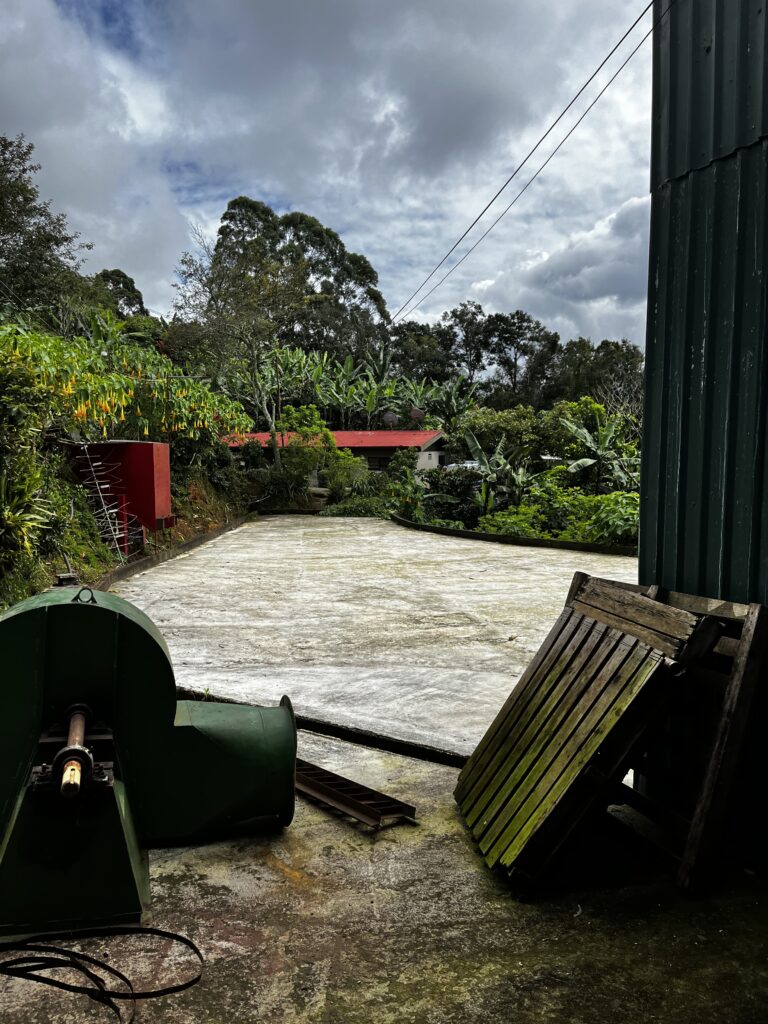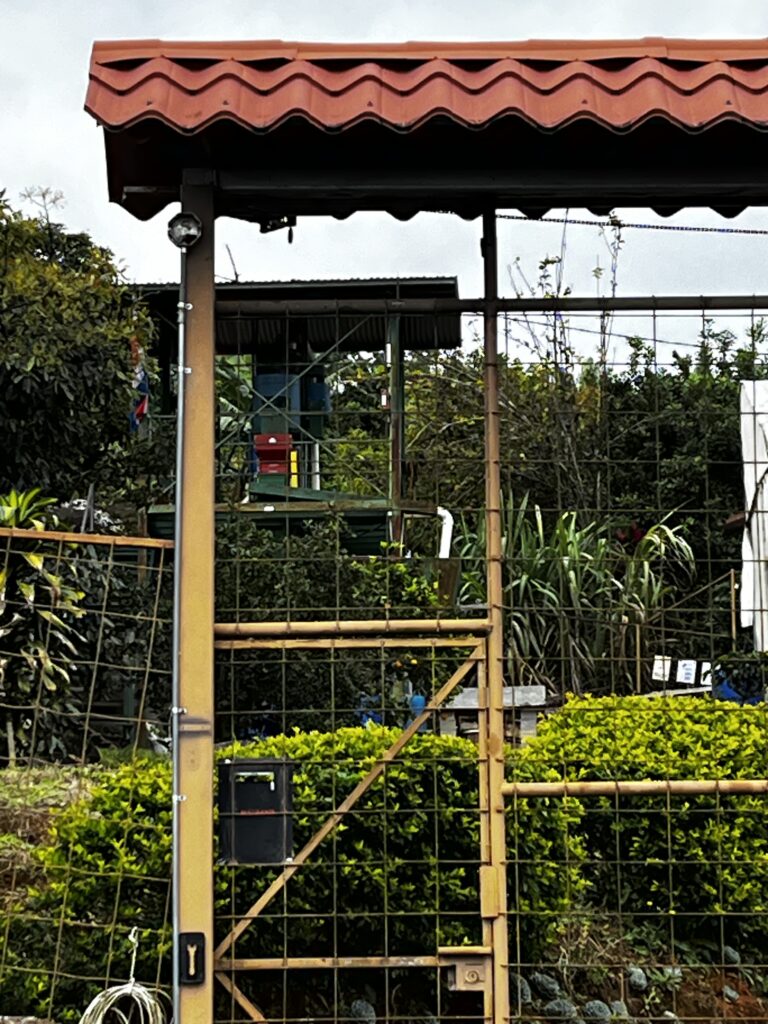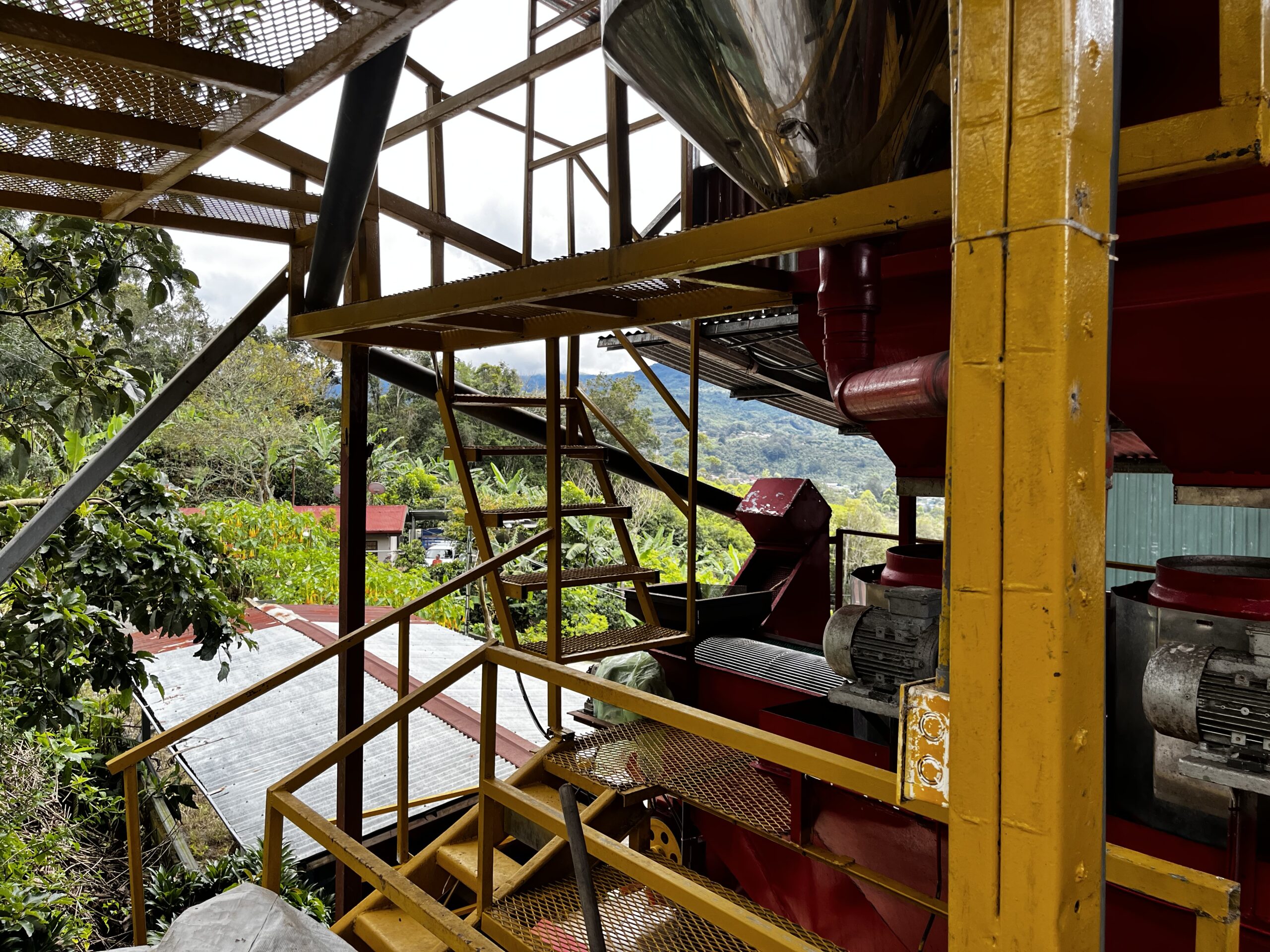The landscape of Tarrazu is stunning. But what is it that makes it so special? Probably the meticulously tended coffee plantations, interspersed with patches of natural forest and surrounded by a variety of trees and plants.
Following the narrow and winding roads up and down the hills, one passes through quiet villages and houses with small gardens and an abundance of flowers. The farms and mills were separated by borders of trees or exotic plants instead of the fences and concrete walls often found in other rural areas.



Beneficio R&S APROCAST, 1.5 km north-east of San Marcos, is no exception. The photo above shows a Brugmansia in full bloom near the entrance. The flowers, when touched or eaten, cause hallucinations or worse, so I suspect it has nothing to do with coffee production here and the plant is common throughout Costa Rica.
I arrived without an appointment, Leonardo Robles was happy to talk about the coffee he produces and the work of the Beneficio. Production is around 1000 fanegas per year of traceable lots and micro lots with both wet and dry processing. Leonardo’s enthusiasm for his work and for coffee growing was contagious. As he said, it is never boring, no two years are the same. Coffee plants change, the climate makes new demands, new varieties become available and the market becomes more demanding. Quality control is a priority, as we could see in his laboratory with its equipment for controlling the quality of the beans and for test roasting.
I will be happy to return during and after processing to see the results of this year’s harvest. Thank you Leonardo.
This is part of an ongoing series exploring coffee fincas and their approaches to production, innovation, and sustainability in the face of changing times
